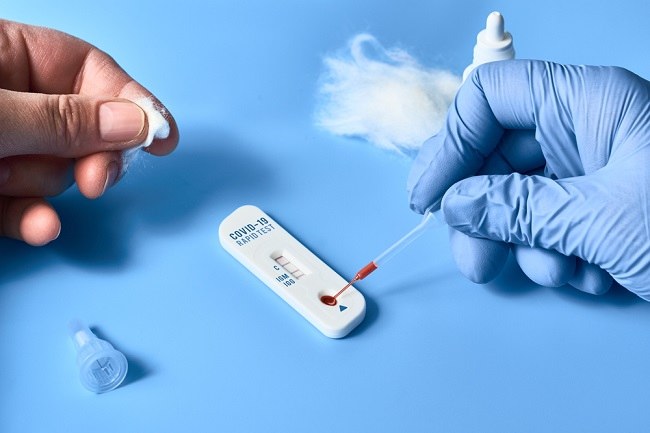A prosthetic limb is a tool used to replace a missing or deformed leg due to various causes, such as illness, accident, amputation, or birth defects.. The use of prosthetic limbs is expected to make it easier for someone to carry out daily activities independently.
Technological developments have also influenced the medical world, including in the field of occupational therapy. One of the important aspects of occupational therapy in patients who have lost a limb is the manufacture and installation of a prosthetic limb, such as a prosthetic arm or leg.

The use of this tool has an important role, so that patients who have lost their original limbs can move and work well and live more independently. However, in order for this tool to function optimally, prosthetic users need to know how to properly care for their prosthetic limbs.
Prosthetics Installation Process
The process of selecting and installing prosthetic limbs is carried out in the hospital by a rehabilitation team consisting of specialists in physical medicine and rehabilitation (sp. KFR) and experts in making prosthetic limbs (prostheses).
Usually, the installation of a prosthetic limb is carried out several weeks after the amputation surgery, depending on the condition of the foot, the wound, and the postoperative healing process.
Before the prosthetic limb is installed, there are several processes that must be carried out, including:
- Ensure the health condition of the area around the feet
- Measure stump or the base where the prosthetic leg will be attached, so that the size of the prosthetic leg fits the patient's body size
- Making foot prints from plaster
- Designing sockets or supports, to make the patient feel more comfortable
- Adding pivots to prosthetic limb candidates
- Beautify prospective prosthetic limbs to suit the aesthetics of the body
Right before the installation of the prosthetic limb, usually a desensitization of the surrounding skin will be performed stump. Desensitization is the process of reducing the sensitivity of the surrounding skin stump, so that the prosthetic leg can be more comfortable to wear.
The desensitization process is carried out as follows:
- skin covering stump pressed using a soft cloth.
- Stump wrapped with a bandage to reduce swelling and prevent fluid buildup around stump.
- The skin around the bone is pulled and rubbed gently to avoid the formation of excessive scar tissue.
To get used to the prosthetic leg while strengthening the remaining muscles, the patient usually needs to undergo physiotherapy and a series of physical exercise programs. Through this program, doctors and physiotherapists can help you get used to using prosthetic limbs and move more comfortably.
Various Tips Treating Prosthetic Feet
In order for prosthetic limbs to be more comfortable to use and function optimally, it is important for users of these tools to properly care for their prosthetics.
Here are some ways to care for artificial limbs that need to be applied every day:
- Remove the prosthetic at bedtime and inspect the prosthetic to make sure there are no broken or loose parts.
- Check the base of the foot or stump to ensure that there is no irritation, injury, or infection. If necessary, ask other people to help check whether or not there is a wound on the skin around it stump.
- clean up stump, then massage the skin gently using lotion.
- Dressing stump use a bandage when not using a prosthetic to reduce swelling.
- Perform exercises to support endurance, range of motion, posture, and stretching, as directed by a physiotherapist or doctor.
- Choose shoes that fit and avoid changing the height of the heels.
- Wear clean, dry socks every time you put on a prosthetic.
- Clean the socket with soap regularly.
In addition, in order for the prosthetic leg to remain in accordance with body size and comfortable to wear, prosthetic users also need to maintain an ideal body weight.
To ensure that the prosthetic limb is still feasible and functioning properly, it is recommended that you have your prosthetic limb checked by a prosthetician or to a medical rehabilitation specialist on a regular basis, at least once a year.
If you experience problems during the use of prosthetics, for example, an infection occurs, the size of the prosthetic does not fit or the prosthetic feels uncomfortable to wear, you should immediately consult a doctor.









